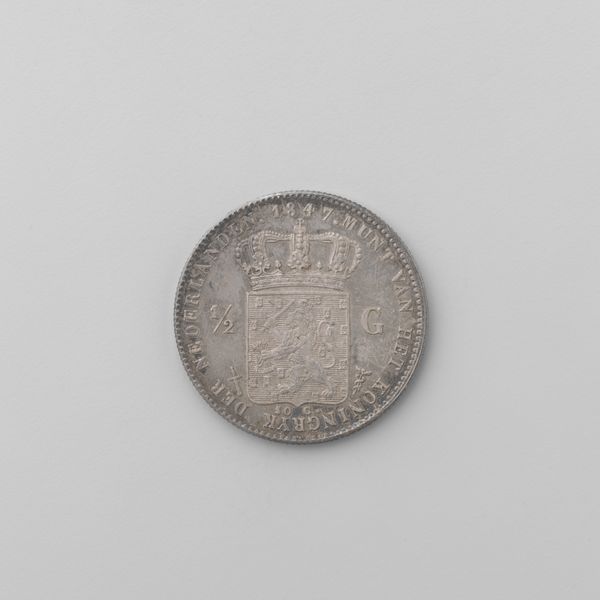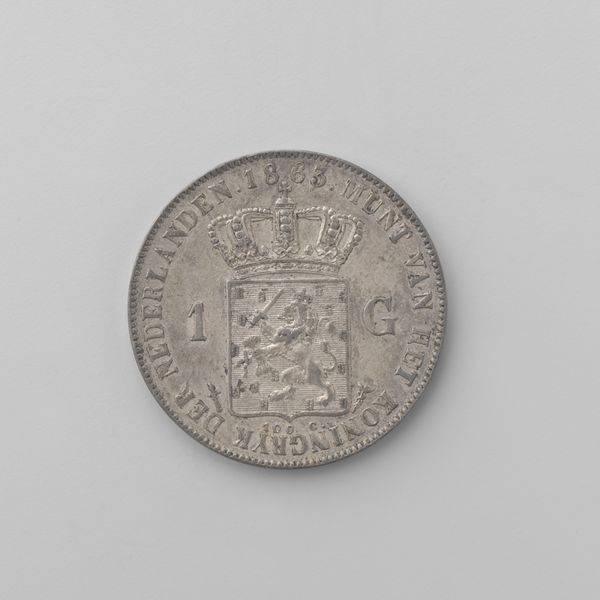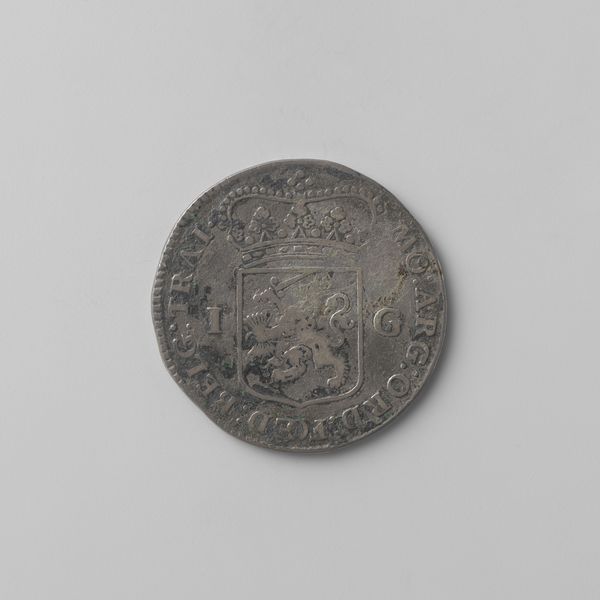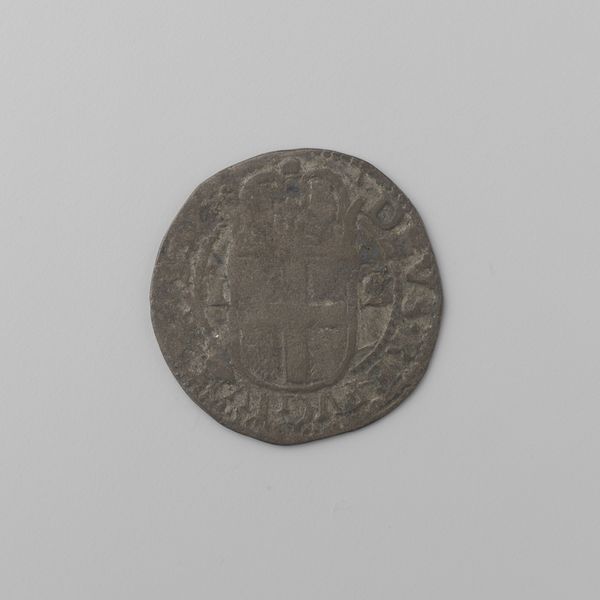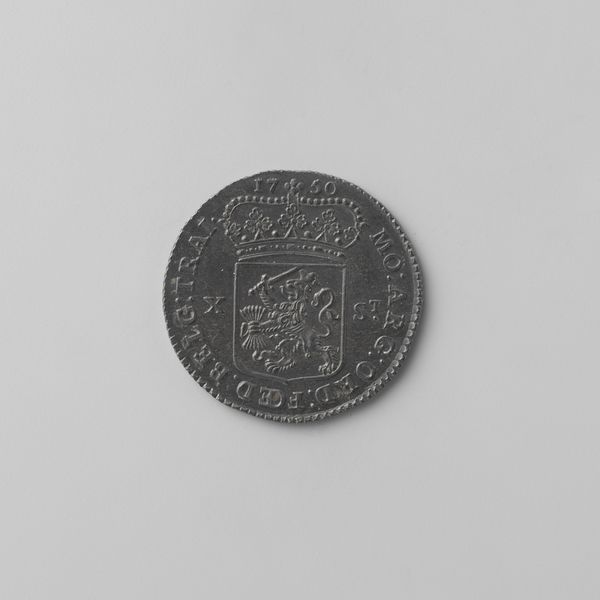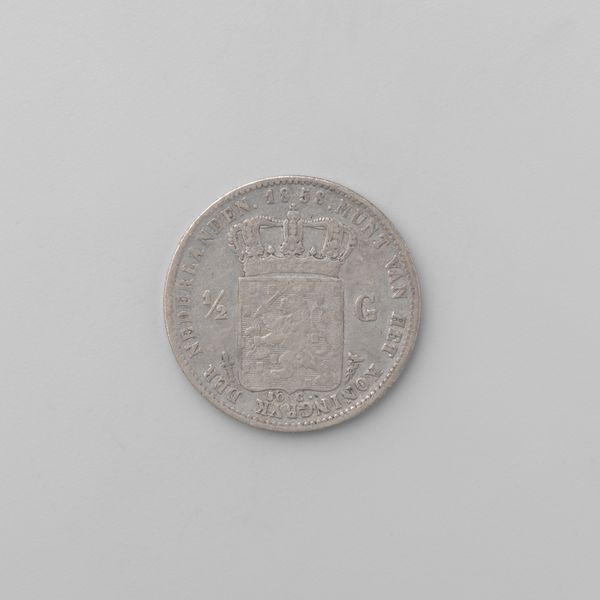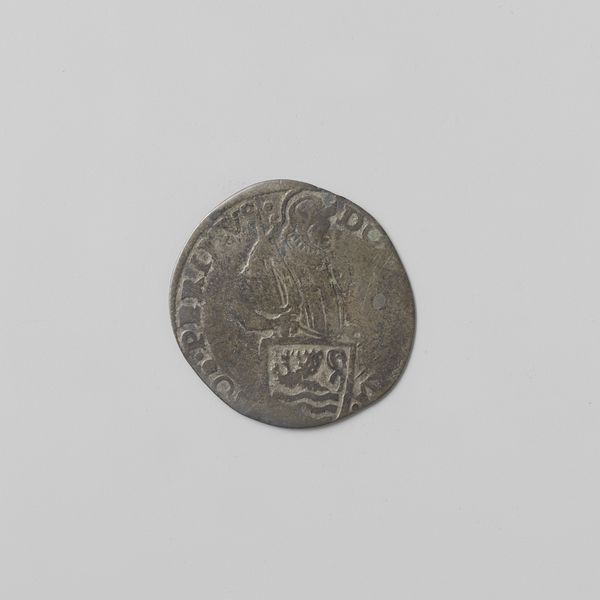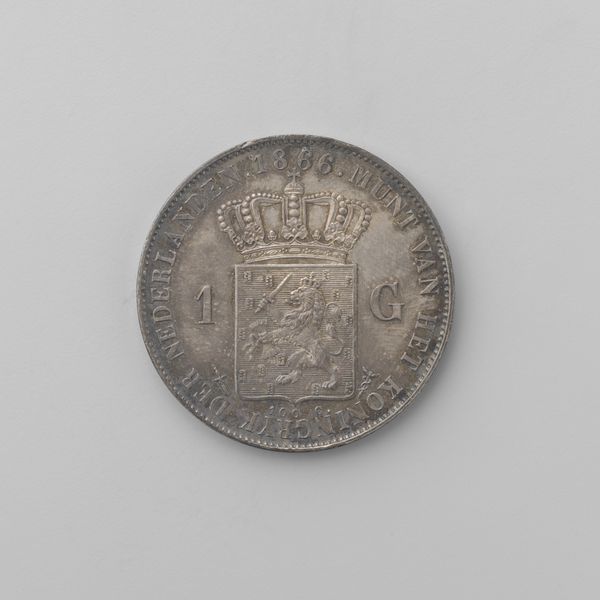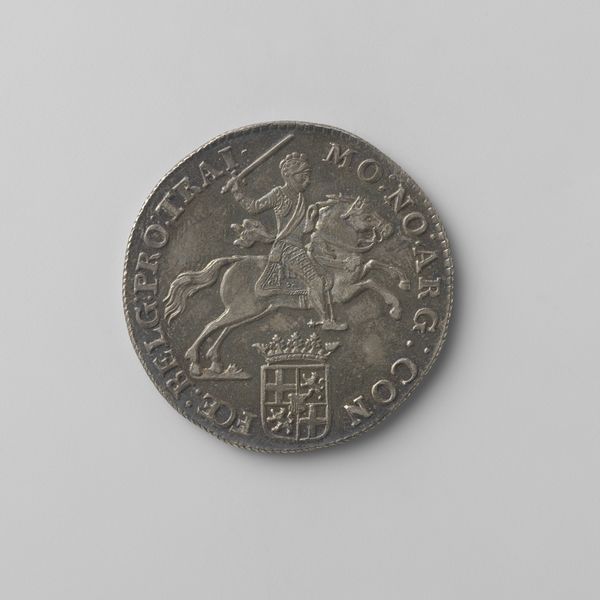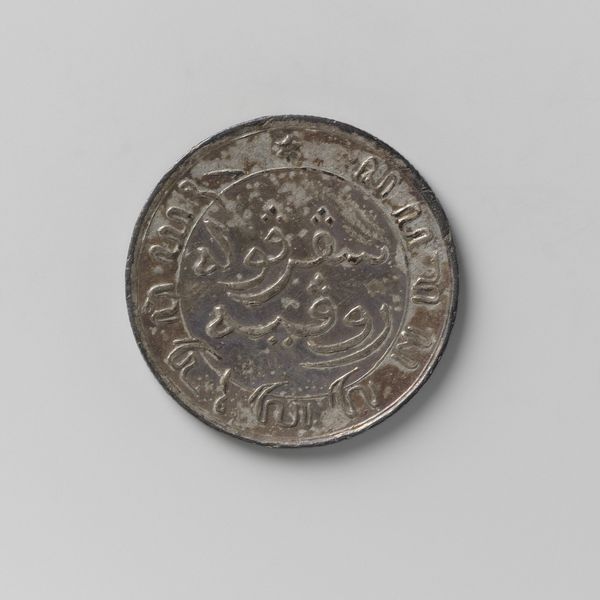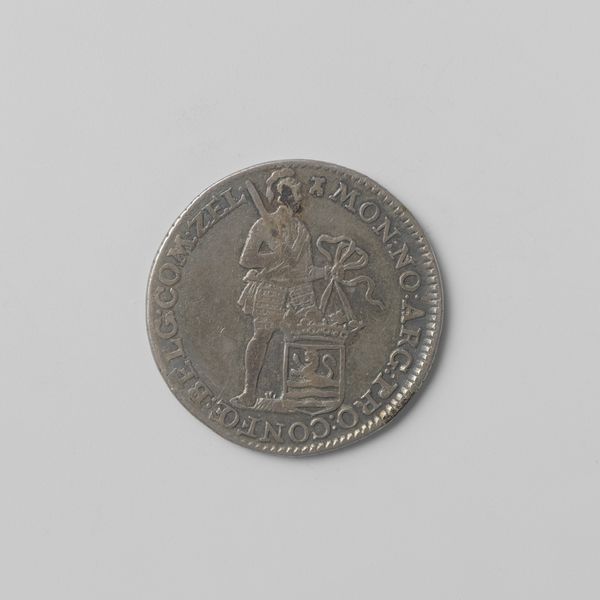
print, metal, engraving
#
studio photography
#
product studio photography
#
product shot
#
antique finish
# print
#
metal
#
polished
#
embossed
#
metallic object render
#
product mock up
#
cutout
#
engraving
#
foil embossing
Dimensions: diameter 2.2 cm, weight 5.00 gr
Copyright: Rijks Museum: Open Domain
Editor: Here we have a Dutch half-gulden coin from 1848, commissioned during the reign of Willem II. It looks to be made of engraved metal, and has an interesting, antique feel. What strikes you about this piece? Curator: What immediately seizes my attention is the bilateral symmetry, so emphatically rendered. We observe a circular form, incised with radial striations at the edge. Then the heraldic shield bisected vertically, crowned and blazoned with a rampant lion. What effect does this achieve, would you say? Editor: I guess the symmetry gives it a sense of order and authority, fitting for currency issued by a king. Do you see other elements contributing to that sense? Curator: Precisely! Note how the engraving is meticulous. The details of the crown, the lion rampant—each element exhibits technical precision. Observe too, the careful arrangement of text encircling the central image. It creates a self-contained universe, drawing the eye relentlessly inward. What is its significance, in your estimation? Editor: I suppose that the typography around the edge could frame the symbol in the middle to keep you focused there. It is like one shape nestled inside another. Curator: A fitting analogy! The structure invites rigorous examination, a kind of decoding. Semiotics are fully at play here, offering visual insights. Each symbolic detail carries potent significance. And how does its metallic quality shape your viewing? Editor: I can see how all the parts—texture, structure, heraldry, engraving—come together to make the meaning here. It seems so obvious, now, and not arbitrary at all. Thanks for your expertise. Curator: Indeed, art and numismatics reward methodical study. There is so much beauty contained within.
Comments
No comments
Be the first to comment and join the conversation on the ultimate creative platform.
